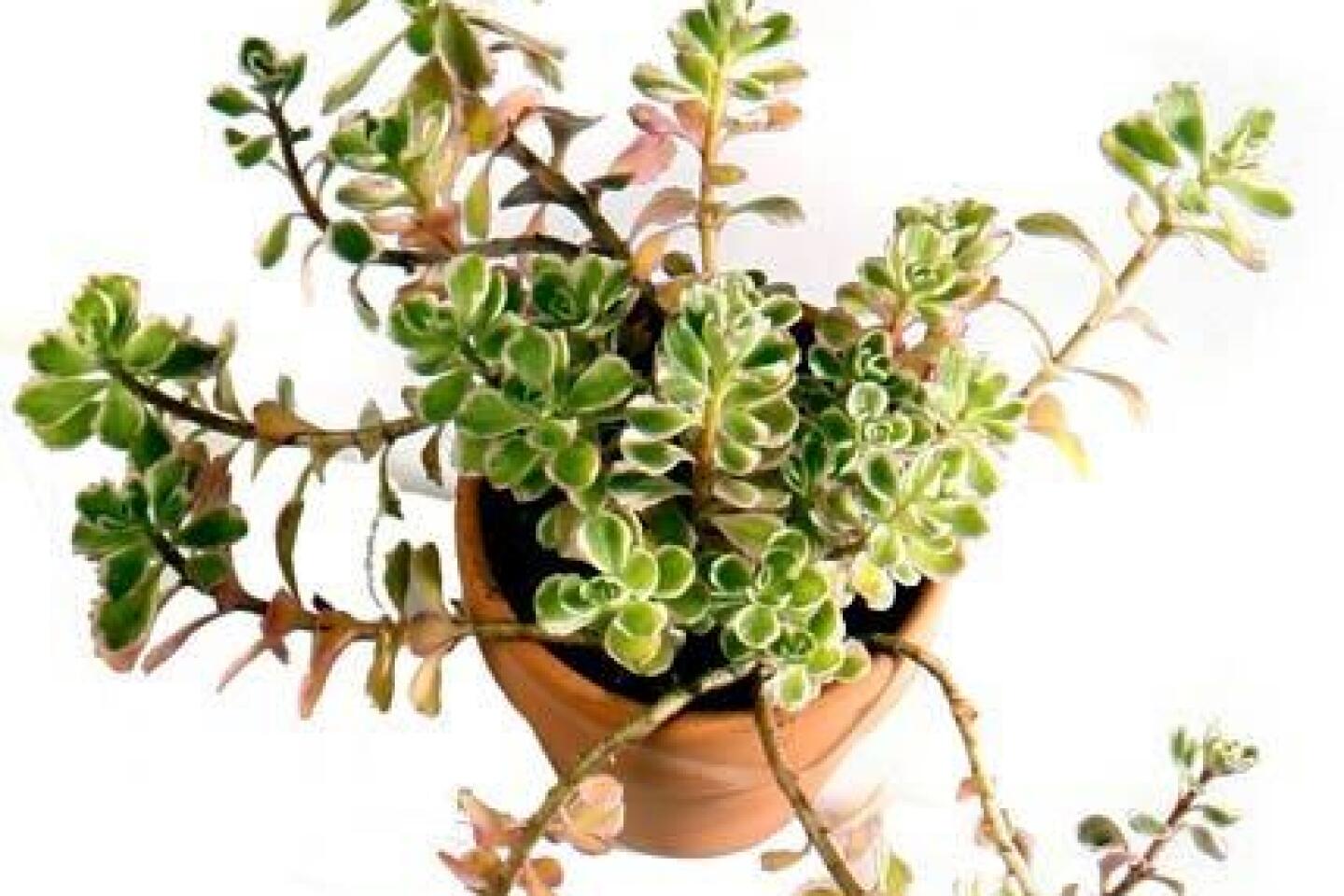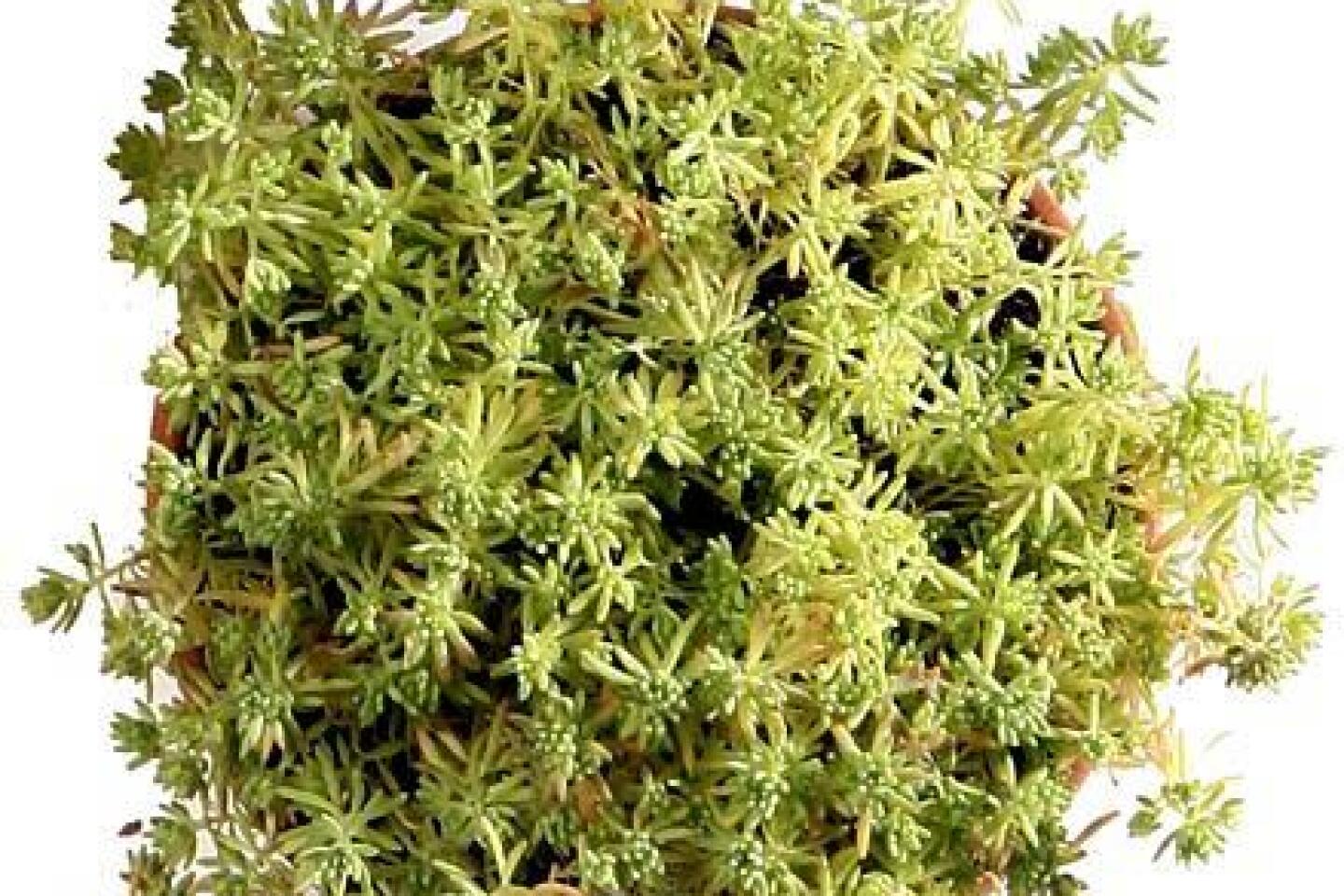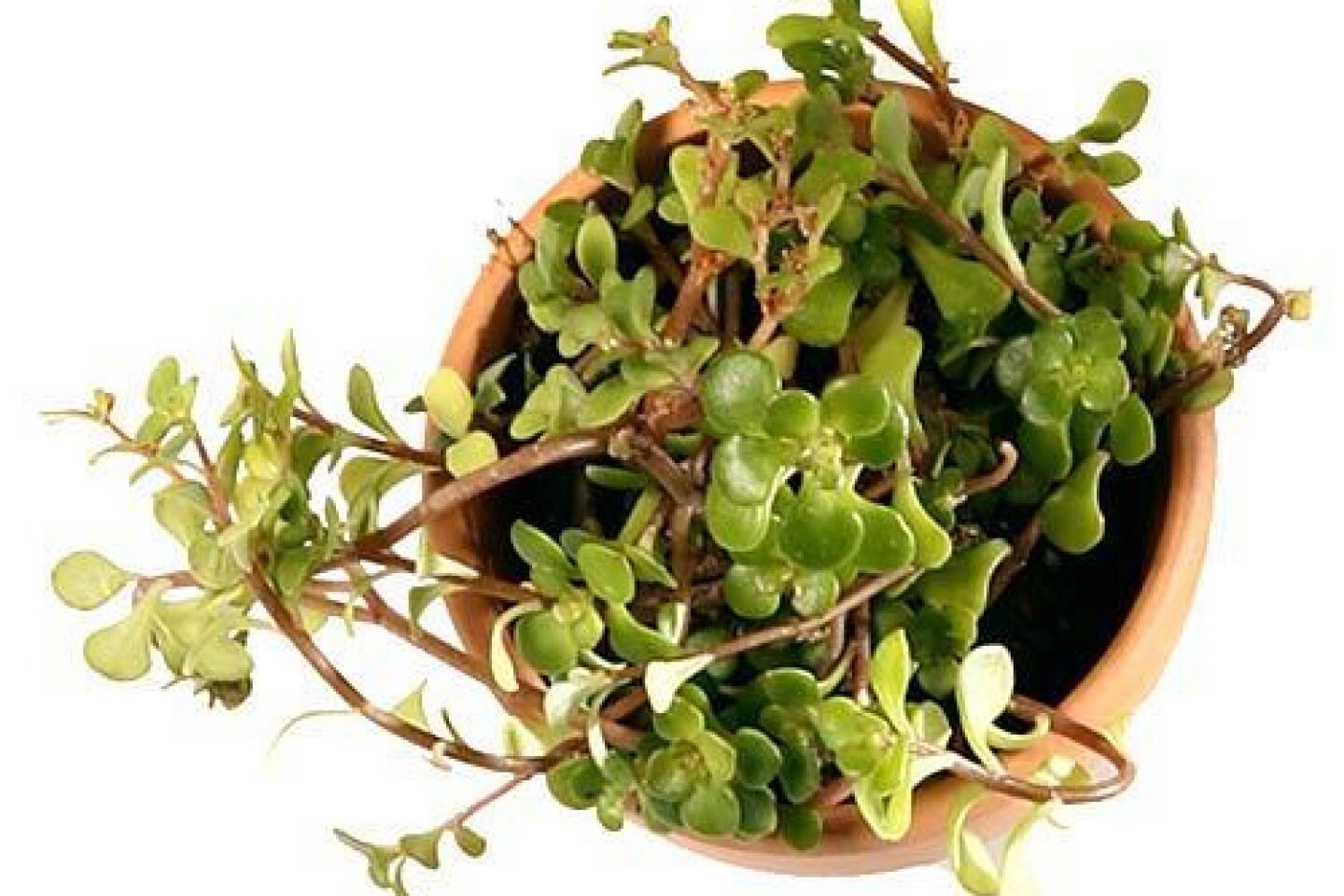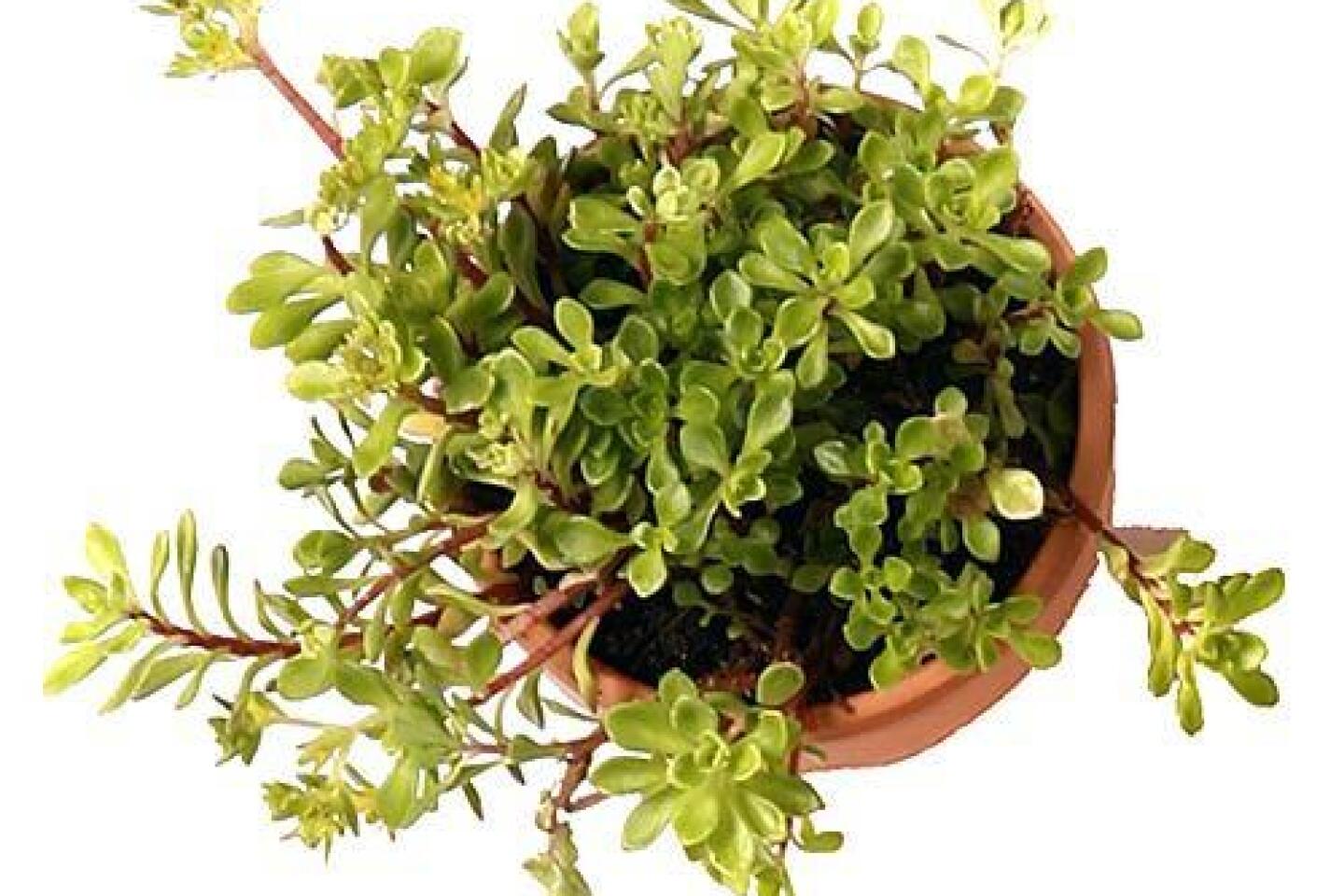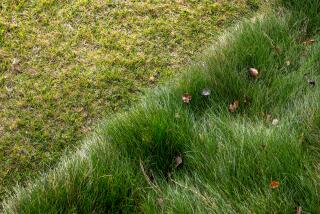Sedum: covering lots of ground
- Share via
Despite all the attention that succulents have received during this record-breaking dry spell, an eco-conscious gardener could shout “Sedum!” with all his might and still be met with a collective shrug.
See . . . what?
SEE-dum, as in the evergreen ground cover cited so often as a water-sipping lawn alternative. As in the heat-absorbing flora frequently employed on green rooftops. As in the versatile, low-maintenance species that work so well on slopes, in rock gardens, around pavers and as filler plants in containers.
While eye-arresting echeverias, otherworldly aeoniums and architectural Agave attenuata take center stage in succulent landscapes and magazine spreads, the poor sedum trudges on, underappreciated and barely recognized -- the character actor you know you’ve seen before, but you’re just not sure where.
The confusion is understandable. Sedums number in the dozens and range from miniature shrubs that can rise 2 feet high to fast-spreading, ground-hugging charmers. Though the species aren’t meant to be walked on like lawn, they will grow back readily. Some do bloom -- even in summer -- but in many cases the plants’ biggest appeal is their foliage, a spectacular array of shapes, sizes and hues.
Customers at the California Cactus Center in Pasadena often choose sedums when they want tough, low-growing color, co-owner Molly Thongthiraj says. But their appeal isn’t limited to practicalities. They’re visually distinctive.
“It has a different texture altogether,” she says, adding that sedum is a good alternative to ice plants. “And it can take the cold. Some of the sedums come from Russia. In the last frost, they did just fine.”
In her new book “Designing With Succulents,” Debra Lee Baldwin suggests using Sedum rupestre ‘Angelina’ en masse to great effect. “Use it to create rivers of colors amid flower beds as a border and in juxtaposition with plants with deep red flowers and foliage,” she says. “It is also lovely cascading from a container or tucked into a stone wall.”
Sedums can be particularly appealing this time of year, as slopes turn brown, sprinklers struggle to quench patches of turf, and gardeners wonder if they can do better. They can.
Below, we take a closer look at some of the sedum ground covers, which are increasingly available in specialty nurseries, at major garden chains and through mail-order catalogs.
Though some sedums can be invasive and need to be planted with care, most are low-water, low-maintenance choices that fit a variety of purposes. Many also can be propagated by stem cuttings.
If you like what you see, more is a snip away.

